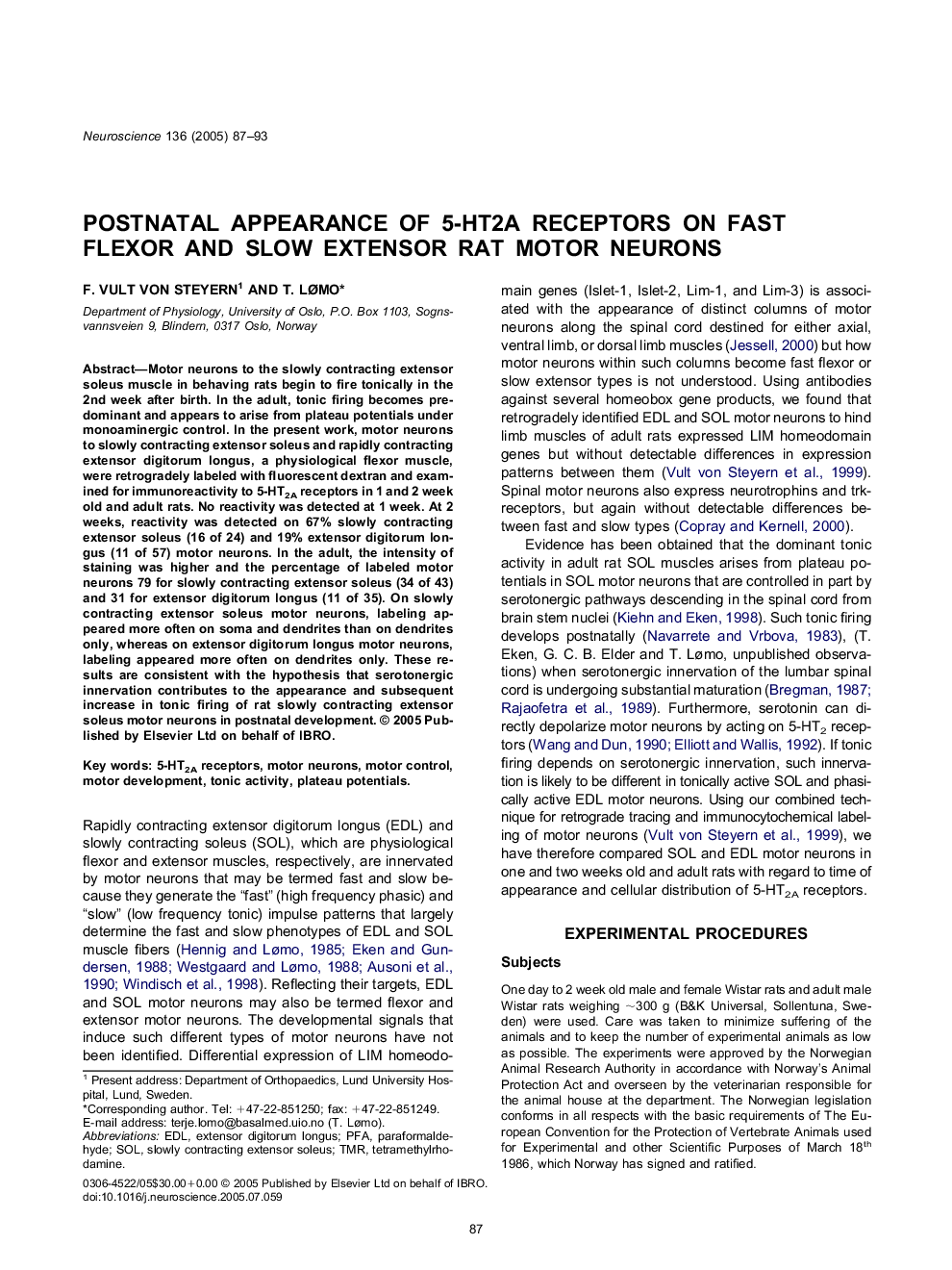| Article ID | Journal | Published Year | Pages | File Type |
|---|---|---|---|---|
| 9426217 | Neuroscience | 2005 | 7 Pages |
Abstract
Motor neurons to the slowly contracting extensor soleus muscle in behaving rats begin to fire tonically in the 2nd week after birth. In the adult, tonic firing becomes predominant and appears to arise from plateau potentials under monoaminergic control. In the present work, motor neurons to slowly contracting extensor soleus and rapidly contracting extensor digitorum longus, a physiological flexor muscle, were retrogradely labeled with fluorescent dextran and examined for immunoreactivity to 5-HT2A receptors in 1 and 2 week old and adult rats. No reactivity was detected at 1 week. At 2 weeks, reactivity was detected on 67% slowly contracting extensor soleus (16 of 24) and 19% extensor digitorum longus (11 of 57) motor neurons. In the adult, the intensity of staining was higher and the percentage of labeled motor neurons 79 for slowly contracting extensor soleus (34 of 43) and 31 for extensor digitorum longus (11 of 35). On slowly contracting extensor soleus motor neurons, labeling appeared more often on soma and dendrites than on dendrites only, whereas on extensor digitorum longus motor neurons, labeling appeared more often on dendrites only. These results are consistent with the hypothesis that serotonergic innervation contributes to the appearance and subsequent increase in tonic firing of rat slowly contracting extensor soleus motor neurons in postnatal development.
Keywords
Related Topics
Life Sciences
Neuroscience
Neuroscience (General)
Authors
F. Vult von Steyern, T. Lømo,
